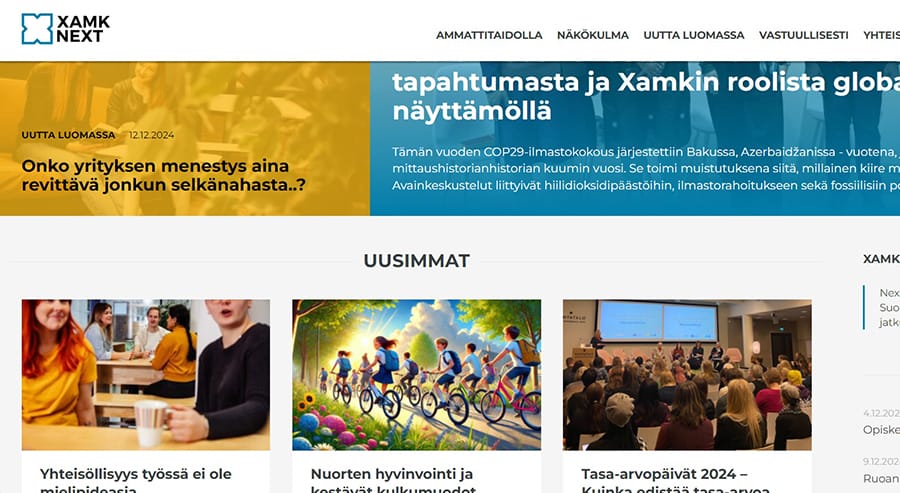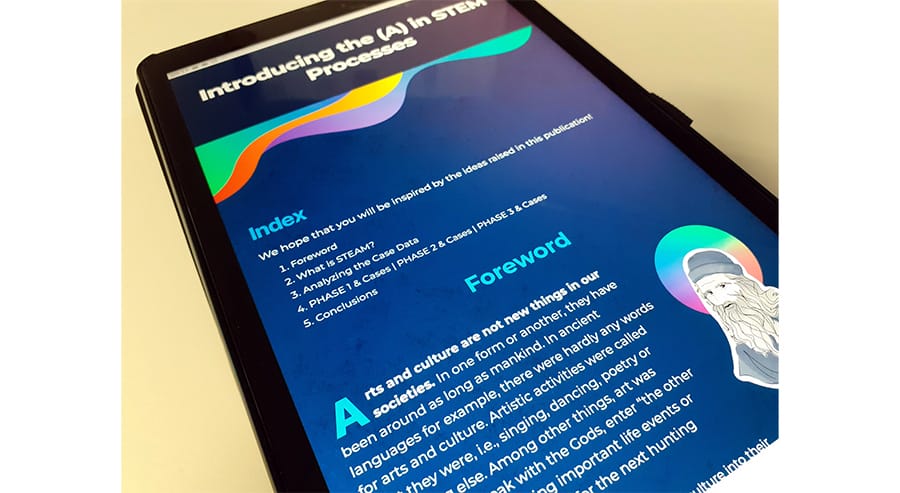Taking STEAM Online: A new publication format for the digital age
Many journals and institutions have started to digitize their publications to make their printed material accessible online, often as PDF text files. Simply putting publications online, however, does not automatically ensure they are read by a wider number of people. Text files are not always the most accessible, user-friendly, or visually appealing way to consume information.
Many of us working as professionals, researchers or project workers just do not have the time to keep up with the massive amount of research that is produced each year.
There are some 60,000 legitimate, peer-reviewed English language journals and the number is increasing by around 3% a year (Ware and Mabe, 2015: 27). One can only imagine how many individual articles each of these journals produce annually. It is not surprising however, that many of us might indeed feel overwhelmed when confronted with the sheer volume of publications and the ‘walls of text’ within when trying to get information about a topic.
If publications need to be written with the audience in mind, shouldn’t we also make sure they are produced in the best possible format for consumption?
At Xamk Publication and Production Services we started to think about different ways that we could format ‘a publication’.
Next already publishes accessible podcasts and news pieces, Read publishes magazine-style articles on our research and development activities, and our other series, Inspire, Develop, and Research publish traditional documents aimed at the public, professional communities, and research and scientific communities respectively. These series are published online in Theseus and occasionally in a printed format too.
While this has been the way of publishing for decades already, we realized, like many other institutions, that a text file is not always the best format to convey information to readers.
These publications require the writer to use text to inspire the reader to carry on reading and sometimes can be a little boring to read. Supplementary material is then hidden behind links often included as a footnote, which requires clicking on a link to open a new window, or at worst, manually typing in the long url address.
While traditional text-based publications still have their time and place, they are not always the most suitable format nor the most user-friendly experience.
With this in mind. We started to think about how to produce web-based publications for the Xamk Inspire series that would be interactive, intuitive, accessible, and inspiring.
By a stroke of luck, we were contacted by the STEAMProcess project who wanted to find a new way to publish their material and felt that a printed publication would be too limiting. So, we decided to work together and use their material as a web publication pilot. This was a fruitful partnership as their material and web-design skills helped to demonstrate the potential of this new publication format.
What is STEAMProcess?
The Introducing the (A) in STEM Processes publication naturally derives from the projects goals: create a framework of the A (Art) skills that are typical in the artistic processes. The new web publication presents how we introduce the variable (A) into the Science, Technology, Engineering and Mathematics (STEM).
Our international project team started out by collecting different reference cases in which the arts and science collide to see what kind of processes already exist.
We wanted to introduce those who have already incorporated art in their study or research process in history, starting with Leonardo Da Vinci and Aristotle. We brought together multiple different theories and frameworks to support the idea of dividing these processes into three phases. For example, creative soft skills and the two hemispheres of the brain are two very different ways to think about how logic, creativity and substance competences collide inside each of us.
The publication material was first made into a PowerPoint presentation. However, it was not the best way to present these ideas and the format felt too restrictive. Due to the nature of the content, we did not want to create a traditional publication either. Writing articles would have felt forced, as the idea was more about showing, not telling.
A website has better means to present these ideas and give the reader the freedom of browsing at their leisure, allowing them to follow what intrigues them the most. In other words, there’s no need to read the website from cover to cover, you can just dip in and dip out of areas that interest you.
Trying out this new web publication form seemed also fitting regarding the STEAMProcess project itself. Why not look and see what possibilities the web publication format offers? Find the publication here: STEAMProcess – Introducing the (A) in STEM Processes (xamk.fi)
For more information about web publications, contact julkaisut@xamk.fi
References
Ware, Mark and Mabe, Michael, ”The STM Report: An overview of scientific and scholarly journal publishing” (2015). Copyright, Fair Use, Scholarly Communication, etc.. 9. https://digitalcommons.unl.edu/cgi/viewcontent.cgi?article=1008&context=scholcom
Funding information
STEAMProcess – Innovating the transition process from STEM to STEAM approach in science, teaching and training project is funded by the Erasmus+ programme of the European Union. Project website: STEAMProcess – Innovating the transition process from STEM to STEAM approach in science, teaching and training – Xamk





